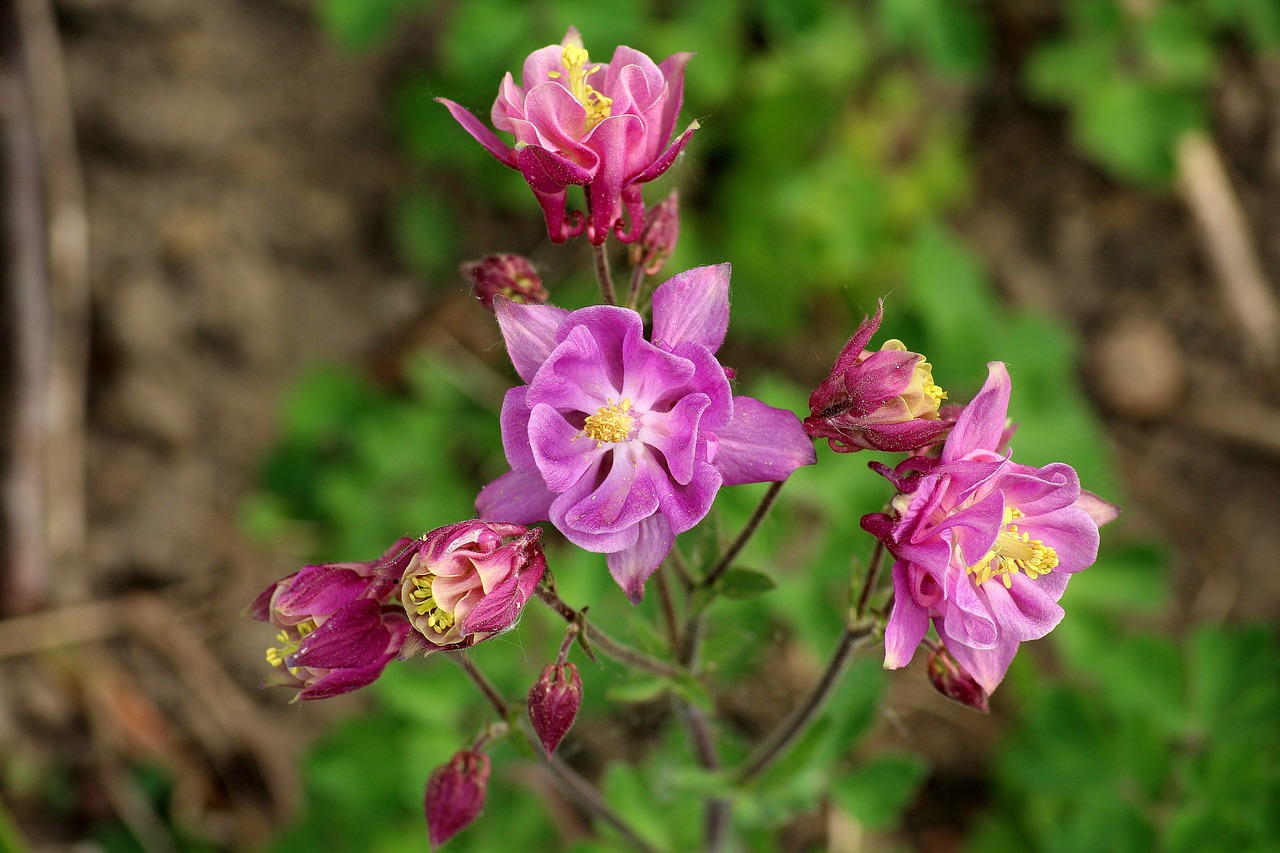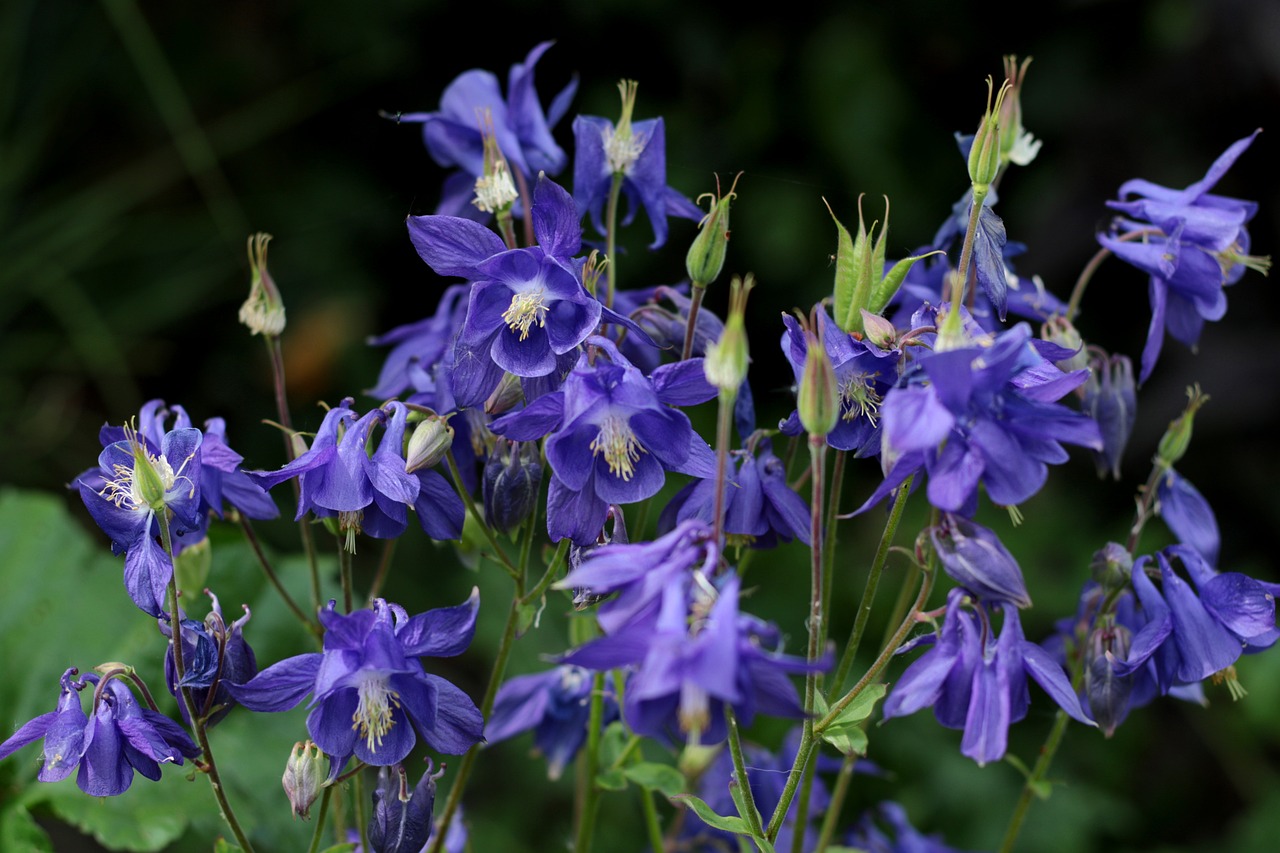
Columbines, with their whimsical nodding blooms and delightfully ruffled skirts, bring a touch of ballet to the garden. These easy-to-grow perennials thrive in dappled shade, adding a splash of color where other flowers might struggle. Whether you’re a seasoned gardener or a curious newbie, cultivating these charming plants is an absolute breeze. So, get ready to witness a magical dance of color unfold in your backyard!
Knowing Your Columbines

The columbine (Aquilegia) boasts a rich and colorful history. Legends abound, with some cultures associating the flower’s unique shape with the Holy Grail. Today, over 70 columbine species grace our gardens, each offering a captivating display. From the classic blue and white of Aquilegia vulgaris to the mesmerizing bi-colored blooms of Aquilegia flabellata, there’s a columbine to suit every taste.
These enchanting flowers come in a delightful array of hues – fiery reds, sunny yellows, calming lavenders, and even elegant blacks. Their petals often boast a charming bicolor effect, with contrasting colors dancing around the edges.
But columbines are more than just pretty faces. These hardy perennials are a dream for beginner gardeners. They’re low-maintenance, deer-resistant, and attract a captivating cast of pollinators – hummingbirds, butterflies, and bees will all flock to their nectar-rich blooms.
Planting the Seeds
There are two main ways to cultivate columbines: starting from seeds or introducing established transplants to your garden.
Seeding for the Future:
- Timing is Key: Columbines are best sown directly outdoors in the fall, around 6-8 weeks before the ground freezes. This allows for a natural cold stratification period, which mimics winter conditions and encourages germination.
- Preparing the Seedbed: Choose a location with dappled sunlight and well-draining soil. Columbines don’t appreciate soggy feet, so ensure the area won’t retain excess water. Amend the soil with some compost or organic matter for extra nutrients.
- Sowing the Seeds: Scatter the tiny columbine seeds lightly over the prepared soil surface. Don’t bury them deeply – a light covering of soil is sufficient. Gently water the area with a mister to settle the seeds.
- Sprouting Magic: Patience is a virtue! Columbine seeds can take anywhere from 4-6 weeks to germinate, so don’t despair if you don’t see immediate results. Keep the soil consistently moist but not waterlogged.
Transplanting Established Columbines:
- Spring is Calling: Spring is the ideal time to introduce young columbine transplants to your garden. Look for healthy plants at your local nursery.
- Choosing the Perfect Spot: Select a location that offers dappled sunlight and well-draining soil. Ideally, the area should receive around 4-6 hours of morning sun and afternoon shade.
- Preparing the Planting Hole: Dig a hole that’s twice the width of the plant’s root ball. Loosen the surrounding soil to encourage root growth. Mix some compost or organic matter into the dug-out soil for added nutrients.
- Settling In: Gently remove the columbine from its container and loosen any tightly bound roots. Place it in the planting hole, ensuring the crown (the point where the roots meet the stem) sits at ground level. Backfill the hole with the amended soil, tamping it down gently to eliminate air pockets. Water thoroughly to settle the plant.
Nurturing Your Columbine Beauties
Once your columbines are established, providing them with a little TLC goes a long way in ensuring a spectacular floral display.
Watering Wisely:
Columbines are fairly drought-tolerant once established, but they do appreciate consistent moisture during their first growing season. Aim to water them deeply once or twice a week, allowing the soil to dry slightly between waterings.
Mulch Magic:
A layer of mulch around the base of your columbines helps retain moisture, suppress weeds, and regulate soil temperature. Apply a 2-3 inch layer of organic mulch, such as shredded bark or compost, keeping it a few inches away from the base of the plant to prevent stem rot.
Deadheading for a Longer Bloom:
To encourage continuous blooming, deadhead spent flowers regularly. Simply snip off the flower head just below where the bloom attaches to the stem. This will prevent the plant from setting seed and redirect its energy towards producing more blooms.
Feeding for Success:
While columbines aren’t heavy feeders, a light application of a balanced fertilizer in early spring can give them a welcome boost. Opt for a slow-release fertilizer formulated for perennials, following the application instructions carefully.
Winter Wonderland
Columbines are generally cold-hardy, but providing a touch of winter protection can be beneficial, especially in colder climates. Once the foliage dies back in fall, cut the stems down to about 3-4 inches above the ground. Apply a light layer of mulch (around 2-3 inches) around the base of the plant to insulate the roots from harsh winter temperatures.
Troubleshooting Common Columbine Issues
While columbines are relatively trouble-free, there are a few occasional issues to keep an eye out for:
- Powdery Mildew: This fungal disease can cause white powdery spots to appear on the leaves. Improve air circulation around your plants and water at the base rather than overhead watering to help prevent this. In severe cases, a fungicide may be necessary.
- Aphids: These tiny sap-sucking insects can cluster on the stems and buds. Encourage natural predators like ladybugs by planting companion flowers. Insecticidal soap spray can also be used to control aphid populations.
- Leaf Miners: These small insects create unsightly tunnels within the leaves. Damaged leaves can be removed and disposed of. Introducing beneficial nematodes to the soil can help control leaf miner populations.
